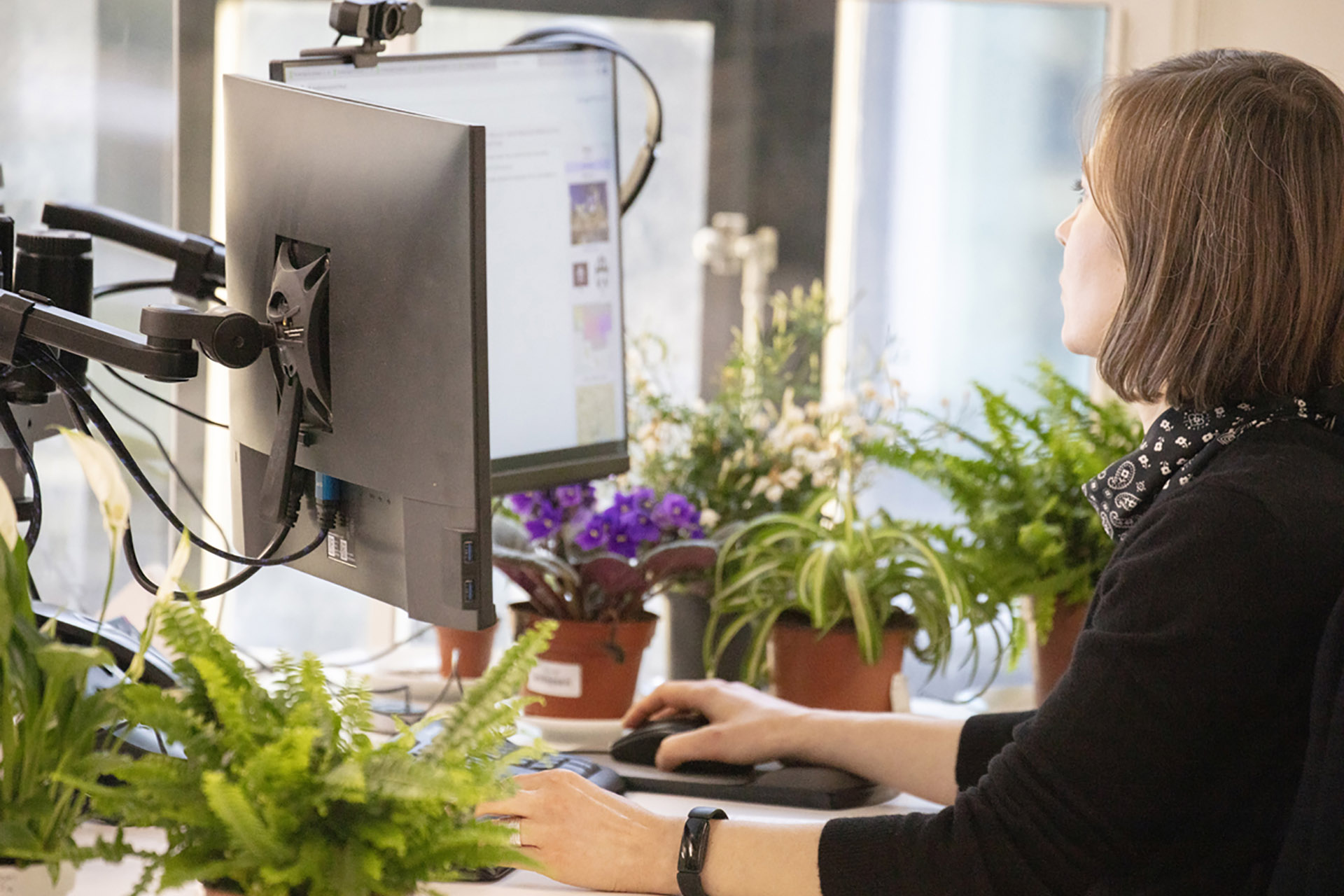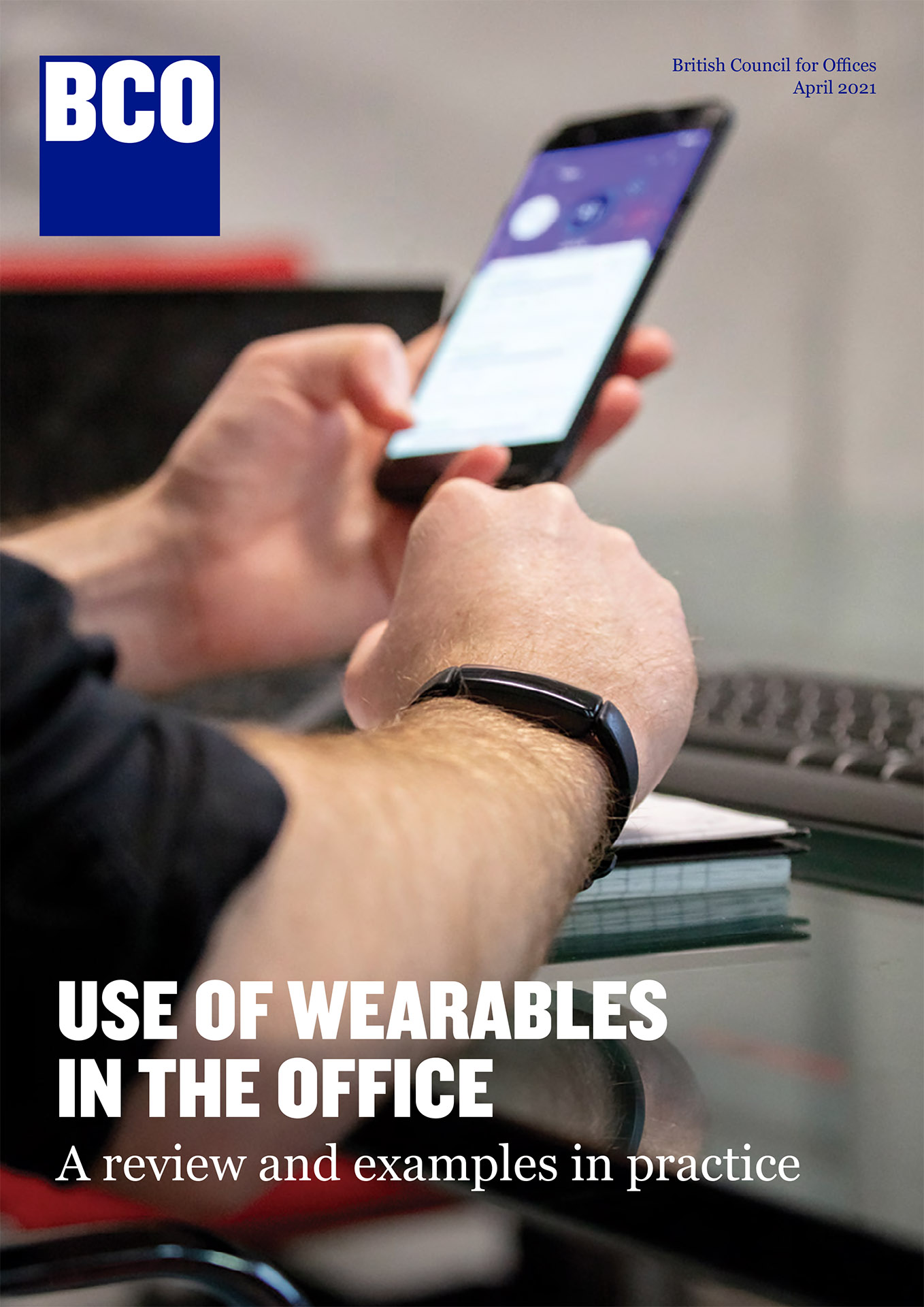Research

Wearables in the Workplace: Measuring health and wellbeing in the office
- In a report for the British Council for Offices, PLP Labs and their research partners explored how wearables can be used to monitor people’s health and wellbeing in offices.
- The study included an in-house pilot study in which test subjects had their bio-markers monitored as they worked across different curated environments.
- The findings of the report show how wearables, combined with qualitative measurement techniques, can unlock new ways of understanding an individual physiologically responds to a space, rather than relying on generalised rules-of-thumb.
Wearables in the Workplace investigated how wearable technologies, such as fitness wristbands and posture scanners, can be used to monitor occupant health and wellbeing in office environments. It considered the current state of wearable technologies, explored possible future uses and applications, and also examined how this all could impact the wider technology industry, workplaces, individual health and wellbeing, and the built environment. To help augment the research, PLP Labs ran an in-house pilot study in which wearables were used to monitor test subjects’ vital signs across different office and home-working scenarios.
PLP Labs worked with specialists from the University of Reading and the University of Loughborough on research for the British Council of Offices (BCO), which was published in a report called ‘Use of Wearables in the Office’. The research explored how wearable technologies, such as fitness wristbands and posture scanners, can be used to monitor occupant health and wellbeing in offices.
The research team explored the current state of wearable technologies and their potential to be used in the workplace. As well as this, the team ran a pilot study in PLP’s studios, where wearables were used to monitor test subjects’ vitals in different office and home-working scenarios. Participants wore the technologies in various workplace scenarios – an isolated cubicle, open-plan office space, a biophilic workspace and the participants’ home. Both qualitative and quantitative data were collected from wearable technologies as well as environmental sensors and subjective questionnaires. The team used Fitbits and Upright posture monitors, as well Airthings Indoor Environmental Quality sensors.
The daily biological and habitual data was collected to see if the technologies are viable tools for individuals, companies or landlords to assess whether certain environments are beneficial to their wellbeing, health and productivity.
Data collected from the study was analysed using the Flourish Framework, a tool developed by Derek Clements-Croome. This gave a way to compare the wide range of results, including subjective parameters like views out and workspace aesthetics, objective parameters such as temperature and air quality, perceptual metrics like alertness and heart rate, and economic-related metrics like wellbeing value and social value.
The wearables provided a new range of data that measured the human, rather than just the building as we have traditionally done. This new data was shown in the ‘perceptual’ quadrant of the flourish framework, along with the questionnaire data.
The questionnaire data asked questions about the test participant’s day, routine and how they were feeling, and how they perceived certain aspects like their own alertness. They filled this in once a day, however some questions were to be filled in twice a day (mood and arousal).
The full research project established a methodology by which individuals, companies or landlords could run an occupant health and wellbeing assessment themselves. Opening up this new set of metrics brings with it a wide range of opportunities for building use and design.
Using wearables empowers the employee to better understand how they spaces the inhabit influences their work. They then have the knowledge and understanding to change the spaces they’re in, or to move place depending on the task they’re doing. This is just as important whilst working from home as it is in the office.
This also allows us to guarantee the performance of a building. Employees or tenants can monitor whether a building is living up to performance promises, but at the same time it also enables landlords or employers to prove the performance of the building through actual metrics.
Overall, wearables unlock opportunities to create far more healthier workplaces. These technologies can remove many of the costs and barriers generally associated with assessing health and wellbeing. As the technology packages and user-interfaces improve, more people with less expertise will be able to run health and wellbeing assessments and adapt their workplace or habits accordingly.
Joyce Chan-Schoof
Joyce is a PhD Researcher at the Design School of Loughborough University. This case study is part of her doctoral field-study to develop a Valuing Biophilic Model to make a business case for human-centric design. She an Architect with two decades of experience in sustainable design; She is currently the Sustainability Lead of the UK Parliament’s Design Authority. She is passionate about bring research into practice.
Professor Derek Clements-Croome




